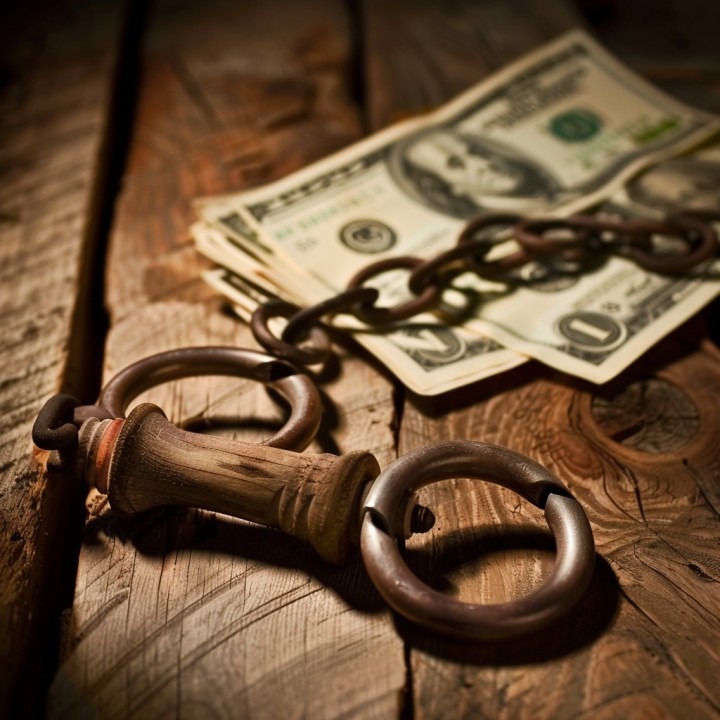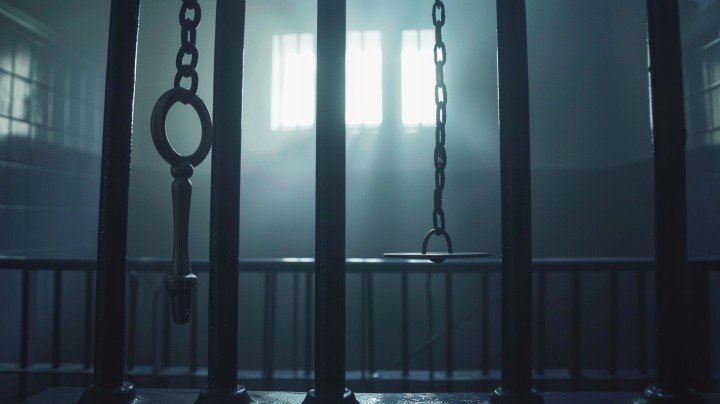Introduction
Bail is a critical aspect of the criminal justice system, designed to ensure that a defendant appears in court while allowing them to remain free until their trial. But how do courts determine bail amounts? This article delves into the various factors and processes involved in setting bail, providing a comprehensive guide to understanding how these decisions are made.
What is Bail?
Bail is a sum of money or property deposited or pledged to a court to persuade it to release a suspect from jail, with the understanding that the suspect will return for trial or forfeit the bail. The primary purpose of bail is to ensure that a defendant appears in court as required, while also allowing them to remain free during the pretrial period. Historically, bail has been an essential component of the judicial system, tracing back to ancient legal traditions where personal sureties and pledges were used to guarantee appearances in court.
The Legal Framework for Bail
Bail is rooted in constitutional and statutory provisions. The Eighth Amendment of the U.S. Constitution explicitly prohibits excessive bail, ensuring that bail amounts are fair and not used as a form of punishment. Various state laws further regulate bail, and key court rulings have shaped its application. For example, the landmark case of Stack v. Boyle set important precedents for reasonable bail conditions based on individual circumstances.
Factors Influencing Bail Amounts
Courts consider several factors when determining bail amounts:
- Flight Risk: The likelihood that the defendant will flee the jurisdiction before trial.
- Criminal History: Prior convictions and history of failing to appear in court.
- Nature of the Offense: The severity and circumstances of the alleged crime.
- Community Ties: Connections to family, employment, and the community.
- Employment Status: Stability of the defendant’s employment situation.
Each of these factors helps the court assess whether the defendant is likely to appear for future court dates and whether they pose a danger to the community.
Bail Schedules
A bail schedule is a list that specifies standard bail amounts for various charges. These schedules provide a starting point for bail amounts based on the type and severity of the offense. However, judges have the discretion to adjust these amounts based on individual case factors. Bail schedules vary widely by jurisdiction, reflecting local legal standards and community values.
Judicial Discretion in Bail
Judicial discretion plays a significant role in bail decisions. Judges consider the specifics of each case, weighing the factors that influence bail amounts. They have the authority to set bail higher or lower than the amounts listed in bail schedules and can also impose additional conditions for release. This discretion ensures that bail decisions are tailored to the unique circumstances of each defendant.
Types of Bail
There are several types of bail that courts may consider:
- Cash Bail: The defendant pays the full bail amount in cash.
- Surety Bond: A bail bondsman posts bail on behalf of the defendant for a fee.
- Property Bond: The defendant or a third party pledges real estate as collateral.
- Release on Recognizance (ROR): The defendant is released based on a promise to appear in court.
- Unsecured Bond: The defendant pays no money upfront but agrees to pay the bail amount if they fail to appear.
Each type has different implications for defendants and their families, impacting their financial situation and freedom during the pretrial period.
The Bail Hearing Process
The bail hearing process typically begins with the defendant’s initial appearance in court. During this hearing, the judge reviews the charges, the defendant’s background, and other relevant factors to determine the appropriate bail amount and conditions. Defendants have the right to be represented by an attorney during this hearing and to present evidence and arguments for lower bail.
Bail Conditions
Courts may impose various conditions on a defendant’s release to ensure they comply with bail requirements. Common conditions include:
- Regular check-ins with a pretrial services officer
- Travel restrictions
- Prohibition from contacting certain individuals
- Mandatory drug testing
Violating these conditions can result in the revocation of bail and re-arrest.
Bail Reform Movements
Bail reform has been a significant topic in the criminal justice system, with movements aimed at addressing inequalities and improving fairness. Historical reforms have included the introduction of bail schedules and pretrial services programs. Recent changes focus on reducing reliance on cash bail, promoting alternatives, and ensuring that bail practices do not disproportionately impact low-income defendants.
High-Profile Cases
High-profile cases often bring attention to the bail system and its perceived flaws. Cases involving celebrities or severe crimes can influence public perception and lead to calls for reform. Media coverage can sometimes sway public opinion and put pressure on the judicial system to reevaluate bail practices.
Bail vs. No Bail
In certain situations, courts may deny bail altogether. This often occurs in cases involving serious crimes or when the defendant poses a significant flight risk or danger to the community. Preventive detention, where defendants are held without bail, is used in these instances to ensure public safety and the integrity of the judicial process.
Role of Bail Bondsmen
Bail bondsmen provide a crucial service in the bail system by posting bail on behalf of defendants who cannot afford the full amount. In exchange, defendants pay a non-refundable fee, typically a percentage of the bail amount. This industry is regulated by state laws, and bondsmen must adhere to specific legal and ethical standards.
Alternatives to Bail
Several alternatives to traditional bail are gaining traction, including:
- Pretrial Services: Programs that provide supervision and support to ensure defendants appear in court.
- Electronic Monitoring: Use of GPS devices to track defendants’ movements.
- Community Supervision: Engagement with community organizations to monitor and support defendants.
These alternatives aim to reduce reliance on cash bail and mitigate its negative impacts.
Impact of Bail on Defendants
The financial burden of bail can be significant, often leading to employment issues and family strain. Defendants who cannot afford bail may lose their jobs, face eviction, and experience long-term economic hardships. Understanding these impacts is crucial in assessing the fairness and effectiveness of the bail system.
Criticisms of the Bail System
Critics argue that the bail system perpetuates inequality, disproportionately affecting low-income individuals and minorities. They point to cases where wealthy defendants can easily secure release while poorer defendants remain in jail. These criticisms have fueled ongoing debates and calls for comprehensive bail reform.
International Perspectives
Bail practices vary widely across countries, providing valuable insights into alternative approaches. Some nations have eliminated cash bail altogether, relying on risk assessments and pretrial services to manage defendants. Comparative analysis helps identify best practices and potential improvements for other systems.
Bail in Federal vs. State Courts
Federal and state courts have different procedures and standards for bail. While federal courts often use risk assessments and pretrial services, state courts may rely more on cash bail and bail schedules. Understanding these differences is essential for navigating the bail system in different jurisdictions.
How to Appeal a Bail Decision
Defendants have the right to appeal bail decisions if they believe the amount or conditions are unreasonable. The appeal process involves filing a motion with a higher court, presenting arguments and evidence, and possibly attending a hearing. Legal representation is crucial for navigating this complex process.
Future of Bail
The future of bail may see significant changes with technological innovations and policy proposals. Automated risk assessment tools, increased use of electronic monitoring, and broader bail reform initiatives are likely to shape the landscape. Long-term trends suggest a move towards more equitable and effective pretrial practices.
FAQs
What factors do courts consider when determining bail amounts?
Courts consider factors such as flight risk, criminal history, the nature of the offense, community ties, and employment status.
Can a judge change the bail amount set in a bail schedule?
Yes, judges have the discretion to adjust bail amounts based on the specifics of each case.
What are some alternatives to traditional cash bail?
Alternatives include pretrial services, electronic monitoring, and community supervision programs.
How can a defendant appeal a bail decision?
Defendants can file a motion with a higher court to appeal the bail amount or conditions, often requiring legal representation.
What impact does bail have on defendants and their families?
Bail can cause significant financial strain, leading to employment loss, housing issues, and long-term economic hardships.
What are the main criticisms of the current bail system?
Critics argue that the bail system perpetuates inequality, disproportionately affecting low-income individuals and minorities.
Conclusion
Understanding how courts determine bail amounts is crucial for navigating the criminal justice system. The process involves a careful balance of various factors, judicial discretion, and legal frameworks. Ongoing bail reform efforts aim to address criticisms and create a fairer system for all defendants. By staying informed, individuals can better advocate for their rights and contribute to meaningful change in the bail system.
[ninja_form id=6]






